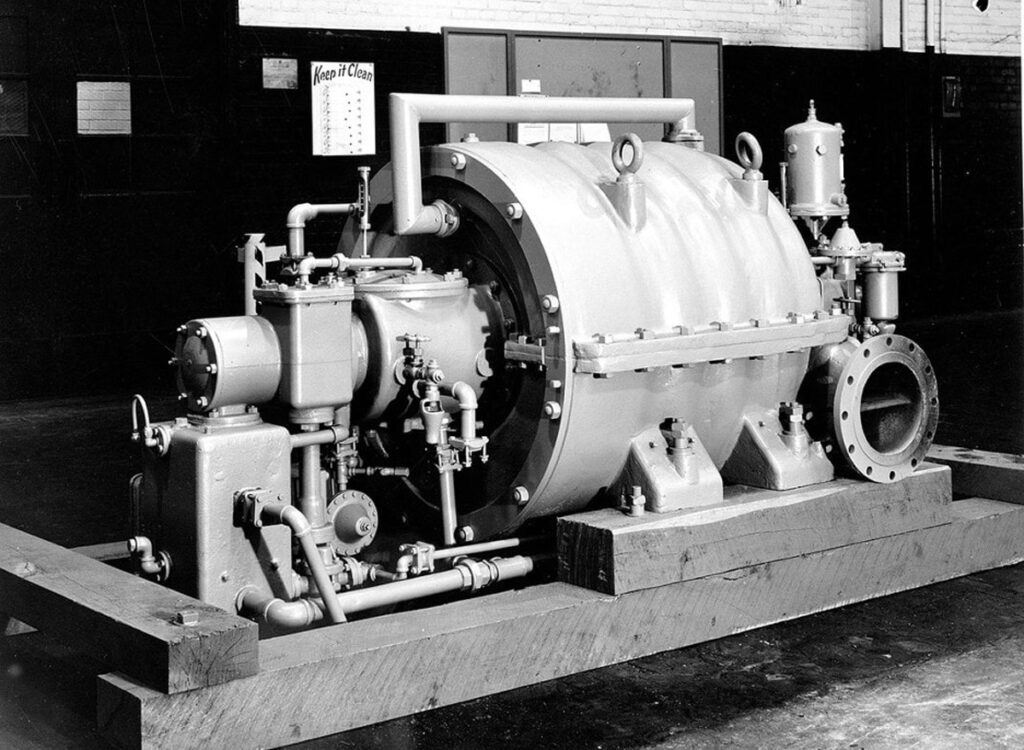Did you know that air conditioners were once too large and expensive for residential use? Let’s take a journey through time!
In this blog post, we’ll see how air conditioning systems went from room size to the size we are familiar with today, making cool comfort accessible to homes across the country.
Early innovations
Early air conditioning systems were impractical for home use due to their size and cost. Early air conditioning systems were mammoth machines, often as large as a whole room, measuring about 7 ft. high, 6 ft. wide, and 20 ft. long. As for their cost, they were originally priced around $10,000 to $50,000 in the early 1900s. Adjusted for inflation, this would be approximately $130,000 to $650,000 in today’s money, clearly an extravagant cost for the average household!
In 1929, Frigidaire introduced a split-system room as a potential solution. While it was small enough for homes, it still had its limitations – the system was heavy and very expensive.
General Electric’s Frank Faust recognized the need for improvement and developed his own room cooler. From 1930 to 1931, General Electric produced 32 similar prototypes, laying the foundation for more practical air conditioning.
Safer and more efficient cooling
Around the same time (early 1930s), a significant breakthrough in refrigerants occurred. Thomas Midgley, Albert Henne, and Robert McNary of General Motors synthesized chlorofluorocarbon (CFC) coolants – the world’s first non-flammable refrigerating fluids.
The safety and stability that these provided allowed for the design of smaller, more efficient, and less expensive air conditioning units. One of the reasons that air conditioners had been so large, as well as limited to industrial or commercial use, was due to the risk associated with flammable refrigerants. The CFC coolants, being non-flammable, made it safe to go ahead and shrink the systems!
However, it was discovered decades later that CFCs contributed to ozone depletion, leading to a global phase-out after the Montreal Protocol in the 1990s. Hydrofluorocarbons (HFCs), which do not harm the ozone layer, gained popularity but were later linked to climate change too.
Onto window ledges
In 1932, H.H. Schultz and J.Q. Sherman filed a patent for an air conditioning unit that could be placed on a window ledge. Although these window units hit the market, their high cost limited widespread adoption. However, engineer Henry Galson took up the challenge and developed a more compact and affordable version of the window air conditioner. Galson’s innovation allowed for mass production by multiple manufacturers, making air conditioning accessible to homeowners. By 1947, around 43,000 of these more affordable window air conditioning units were sold, giving homeowners the opportunity to enjoy cool comfort without expensive upgrades.
The popularity of A/C continued to grow, and by the late 1960s, central air conditioning became a standard feature in most new homes.
The present
Now, relatively smaller A/C systems have become an essential feature in almost every American home. The technology continues to evolve, focusing on energy efficiency, smart home integration, and the development of refrigerants that have a minimal impact on the environment.
A/C has certainly come a long way; systems have gotten a lot smaller and more affordable… It’s pretty interesting to learn about the evolution of these marvels on which we all rely for our comfort!
If you need to reach out to the experts about your system or are considering modernizing with the best that the latest systems have to offer, give us a call today: (919) 853-7910

